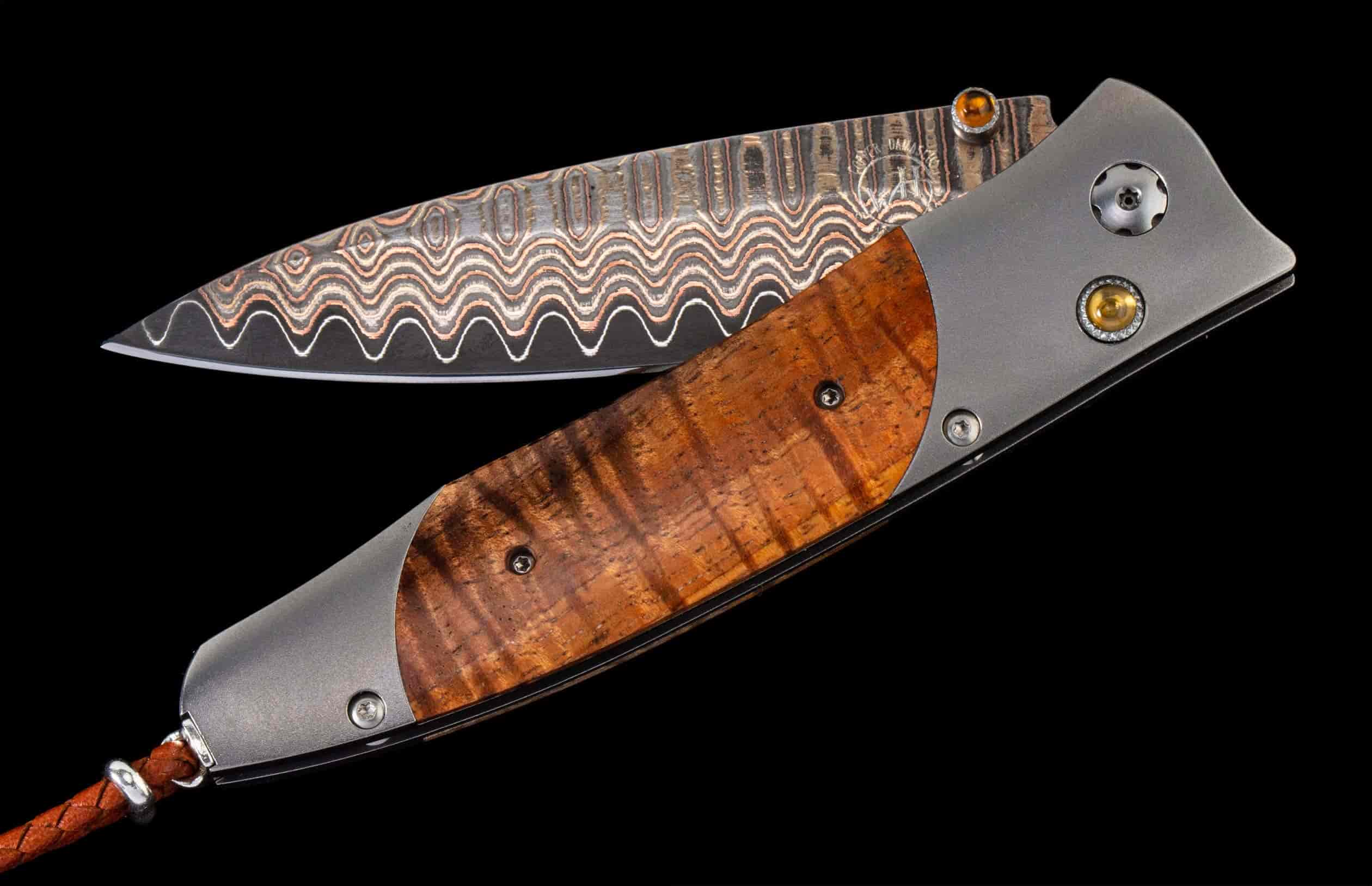808
Titanium pocket knife with koa wood and 'copper wave' damascus blade
Product Details
The Gentac ‘808' features a light and resilient frame in brushed finish titanium, inlaid with curly koa wood. The blade is 'Copper Wave' damascus with a core of VG5 steel; the one-hand button lock and the thumb stud are set with citrine gemstones. An exceptional design that offers rigorous performance in a sleek, comfortable knife, the Gentac is also the perfect canvas to showcase William Henry’s range of exotic materials and techniques. The '808’ features some of the hi-tech materials and hand-forged metals that are the hallmark of William Henry's collections; a modern design for a timeless heirloom to be proudly worn and used for a lifetime before being handed-down to another generation.
Product SKU: B30 808
Features & Specs
- One-hand button lock system
- Shipped in an elegant wood presentation box
- Dimensions:
Blade 3.25" (82.5mm)
Handle 3.80" (96.5mm)
Overall open 7.00" (177.8mm)




